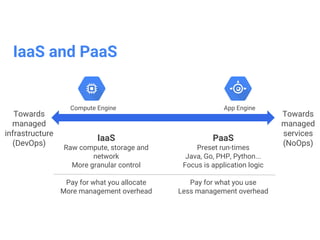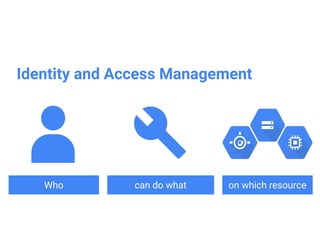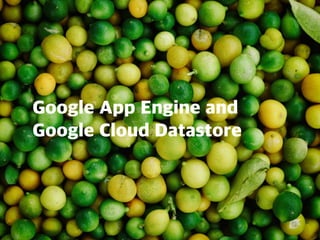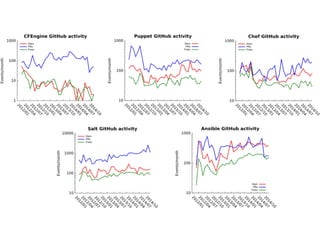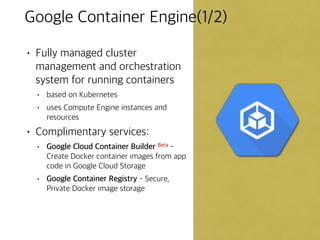Gcp intro-20160721
- 1. Introduction CDNetworks inc. Product Manager / Haeseung Lee
- 2. before we start… • Pros & Cons of Cloud Computing?
- 3. Pros of Cloud Computing • say ‘goodbye’ to costly systems • access from innumerable options • software expense • cooked food • lower traditional servers’ cost • data centralization • data recovery • sharing capabilities • cloud security • free cloud storage • instantly test Cost Saving Reliability Manageability Strategic Edge = Edge Computing
- 4. Cons of Cloud Computing • net connections • low bandwidth • affected quality • security issues • non-negotiable agreements • cost comparison • no hard drive • lack of full support • incompatiblity • lack of insight into your network • minimal flexibility Downtime Security and Privacy Vulnerability to attack Limited control and flexibility Platform Dependency(aka ‘Lock in’) Cloud Computing costs
- 5. Cloud Vendors? = Our Competitors!
- 7. Public Cloud Adoption either or both Azure offerings. 7 percent are using Google App Engine and 6 percent are using Google IaaS, while 10 percent are using either or both of Google IaaS/PaaS.
- 8. Private Cloud Adoption 2016 vs. 2015 ©2016 RightScale, Inc. All rights reserved. This work by RightScale is licensed under a Creative Commons Attribution 4.0 International License. In comparison to last year, there were noticeable increases in adoption rates of every private cloud technology. VMware vSphere/vCenter went up eleven percent (33 to 44 percent). OpenStack and VMware vCloud Suite both increased six percent (13 to 19 percent).
- 10. MS Azure Service
- 11. Why choose Google Cloud Platform? • enables developers to build, test and deploy applications on Google’s highly-scalable, secure, and reliable infrastructure. • computing, storage, big data/machine learning, and application services for web, mobile, analytics, and backend solutions.
- 12. Google’s Infrastructure . Google has been building for the past 15 years: Massive, Powerful infrastructures such as datacenter and high-speed fiber optic networks. . Data Centers / Backbone / 70+ edge POPs in 33 Countries / edge caching platform
- 13. Cloud Regions and Zones • Regions • Regions are specific geographical locations where you can run your resources • are collections of zones • Regional resources are available to resources in any zones in the region • Zones • Isolated locations within a region • Zonal resources are only available in that zone • Multi-regional resources - below are one or more multi-regional deployment in addition to any regional deployment • Google App Engine and its feature • Google Cloud Database • Google Cloud Storage • Google BigQuery
- 14. Innovative, Customer-Friendly Pricing • Sub-Hour billing • Sustained-use discounts • automatically reward users who run virtual machines for over 25% of any calendar month • Compute Engine custom machine types • pay only for the resources you need for your application • online pricing calculator
- 15. ©Google Inc. or its affiliates. All rights reserved. Do not distribute. 12 Image by Connie Zhou Next Fully automated Now User managed, user configured, user maintained 1st wave: Colocation 2nd wave: Virtualized datacenters 3rd wave: A global, elastic cloud The Future of Cloud Computing Notes:
- 16. ©Google Inc. or its affiliates. All rights reserved. Do not distribute. IaaS and PaaS 14 PaaS Preset run-times Java, Go, PHP, Python... Focus is application logic Pay for what you use Less management overhead IaaS Raw compute, storage and network More granular control Pay for what you allocate More management overhead Towards managed infrastructure (DevOps) Towards managed services (NoOps) Compute Engine App Engine
- 19. ©Google Inc. or its affiliates. All rights reserved. Do not distribute. Google Cloud Platform 15 BigQuery Big Data Pub/Sub Dataflow Dataproc Datalab Compute Compute EngineApp Engine Container Engine Storage Cloud Storage Cloud SQL Cloud Datastore Bigtable Machine Learning Speech APIMachine Learning Translate APIVision API
- 20. Google Cloud Platform Console • https://console.gloud.google.com
- 21. Projects • All GCP services are associated with a project that is used to: • Track resources and quota ranges • Enable billing • Manage permissions and credentials • Enable services and APIs • Projects use three identifying attributes: • Project Name • Project Number • Project ID - aka Application ID • Interact with projects using the Cloud Console or the Cloud Resource Manager APIAlpha
- 22. Project Permissions - primitive roles Owner Billing Administrator ViewerEditor Invite members Remove members Can delete project includes Editor rights Deploy applications Modify code Configure services includes Viewer rights Read-only access Manage billing Add administrators Remove administrators A project can have multiple owners, editors, viewers and billing administrator. - Primitive roles -above - curated roles - new IAM roles that give finer-grained access control than the primitive roles
- 23. ©Google Inc. or its affiliates. All rights reserved. Do not distribute. Identity and Access Management 8 Who can do what on which resource
- 24. IAM roles - Curated Roles ©Google Inc. or its affiliates. All rights reserved. Do not distribute. IAM Roles - Curated Roles IAM ✔ compute.instances.delete ✔ compute.instances.get ✔ compute.instances.list ✔ compute.instances.setMachineType ✔ compute.instances.start ✔ compute.instances.stop . . . List of Permissions InstanceAdmin Role project_a Google Group
- 25. Service Accounts and IAM • Service Accounts authentication with keys • google manage keys, key rotation for Compute engine and App engine • Can assign an IAM role to the service account • Can also assign serviceAccountActor role to users/groups ©Google Inc. or its affiliates. All rights reserved. Do not distribute. Service Accounts and IAM 14 ● Service accounts authenticate with keys ○ Google manages keys, key rotation for Compute Engine and App Engine ● Can assign an IAM role to the service account ● Can also assign ServiceAccountActor role to users/groups Service Account InstanceAdmin Role Compute Instances Service Account Identity IAM Role Resource User/Group ServiceAccountActor Role Notes: Users require a username and password to authenticate. Apps use a key. One
- 26. Google App Engine and Google Cloud Datastore
- 27. ©Google Inc. or its affiliates. All rights reserved. Do not distribute. 3 Google Cloud Platform NetworkingCompute Big Data Machine Learning Storage Operations and Tools Compute Engine Container Engine App Engine
- 28. What is Google App Engine • A platform(platform as a service) for building scalable web applications and mobile backends • App Engine makes deployment, maintenance, and scalability easy so you can focus on innovation
- 29. ©Google Inc. or its affiliates. All rights reserved. Do not distribute. 6 700million “App Engine enabled us to focus on developing the application. We wouldn’t have gotten here without the ease of development that App Engine gave us.” Bobby Murphy, CTO Snapchat sends photos and videos each day Google App Engine scaled seamlessly during growth to millions of users Small team is able to innovate quickly and expand globally Snapchat App Engine - Best Practice
- 30. App Engine Standard Environment • Managed runtimes for specific versions of Java, Python, PHP & Go • Autoscale workloads to meet demand • Free daily quota, usage based pricing • SDKs for development, testing and deployment • Need to conform to sandbox constraints: • no writing to local file system • request timeouts at 60 seconds • Limit on 3rd-party software installations
- 31. ©Google Inc. or its affiliates. All rights reserved. Do not distribute. Example App Engine Standard Workflow - Web Applications 10 Project App Engine App Servers Application instances Application instances Application instances App Engine can access a variety of services using dedicated APIs 1 Develop & test the web application locally 2 Use the SDK to deploy to App Engine 3 App Engine automatically scales & reliably serves your web application Task queues Scheduled tasks Search Memcache Logs Notes:
- 32. App Engine Flexible EnvironmentBeta • Build, deploy containerized apps with a click • Standard runtimes - Python, Java, Go, Node.js - with no sandbox constraints • Custom runtime support for any languages that support HTTP requests • During beta pricing based on Compute Engine usage • Local development relies on Docker • Standard runtimes can access App Engine services: Datastore, Memcache, task queues, logging, users, and so on.
- 33. ©Google Inc. or its affiliates. All rights reserved. Do not distribute. App Engine Standard vs Flexible Environment Standard Environment Flexible Environment Instance startup Milliseconds Minutes SSH access No Yes (not default) Scaling Manual, basic, automatic Manual, automatic Write to local disk No Yes (ephemeral) Support for 3rd party binaries No Yes Network access Via App Engine services Yes Customizable stack No Yes 18
- 34. Google Cloud Endpoints • Build your own API running on App Engine Standard • Expose your API using a RESTful interface • Includes support for OAuth 2.0 authorization • Generate client libraries • Support Java and Python server-side code • Includes App Engine features • scaling • denial of service protection • high availability • Support iOS, Android, and JavaScript Clients
- 37. ©Google Inc. or its affiliates. All rights reserved. Do not distribute. 23 Google Cloud Platform Compute Machine Learning Storage Operations and Tools Cloud Storage Cloud SQL Cloud Datastore Cloud Bigtable Networking Big Data
- 38. Google Cloud Datastore • Database designed for application backends • NoSQL store for billions of rows • Schemaless access, no need to think about underlying data structure • Local development tools • Automatic scaling and fully managed • Built-in redundancy • Supports ACID transactions • Includes a free daily quotas • Access from anywhere through a RESTful interface
- 39. ©Google Inc. or its affiliates. All rights reserved. Do not distribute. 3 Google Cloud Platform Compute Machine Learning Storage Operations and Tools Cloud Storage Cloud SQL Cloud Datastore Cloud Bigtable Networking Big Data
- 40. Google Cloud Storage • High performance, internet-scale, immutable BLOB(binary large object) storage • Not a file system(but can be accessed as one via 3rd-party tools such as Cloud Storage Fuse) • Simple administration and does not require capacity mgmt • Data encryption in-flight and at rest • All storage classes accessed through the same APIs
- 41. Cloud Storage Classes ©Google Inc. or its affiliates. All rights reserved. Do not distribute. Cloud Storage Classes Standard Storage DRA Storage Nearline Storage Standard Storage provides the highest durability, availability and performance with low latency and is ideal for use with website content distribution and video streaming Durable Reduced Availability Storage offers the same durability as Standard Storage but with a lower availability SLA at a reduced cost Nearline Storage offers low-cost, highly durable storage service for data archiving, online backup, and disaster recovery, without having to wait hours or days to retrieve or access your data Each option comes with detailed pricing
- 42. Cloud Storage Integration ©Google Inc. or its affiliates. All rights reserved. Do not distribute. Cloud Storage Integration 1 Import and export tables Object storage, logs, Datastore backups Startup scripts, images and general object storage Import and export tables App Engine Compute Engine Cloud Storage Cloud SQL BigQuery
- 43. DEMO 1. Getting Started with GCP 2. Deploying Applications using Google App Engine and Cloud Datastore
- 44. Google Cloud SQL • Google-managed MySQL relational database in the cloud • Pay-per-Use model • RESTful API for management • Affordability and performance • Good Security • Vertical scaling(read and write) • Horizontal scaling(read) • Seamless integration with App Engine and Compute Engine
- 45. ©Google Inc. or its affiliates. All rights reserved. Do not distribute. Managed backups Google security Automatic replication Familiar Flexible pricing Cloud SQL Features
- 46. ©Google Inc. or its affiliates. All rights reserved. Do not distribute. 28 Cloud SQL Integration Cloud SQL can be used with App Engine using standard drivers like Connector/J for Java or MySQLdb for Python. App Engine applications are authorized to access Cloud SQL, and the instance can be configured to follow one application. Compute Engine instances can be authorized to access Cloud SQL instances using an external IP address. Cloud SQL instances can be configured with a preferred zone - to stay close to the Compute Engine infrastructure. Cloud SQL can be used with external applications and clients by authorizing IP addresses or networks using CIDR notation. Standard tools like MySQL Workbench can be used to administer databases. External read replicas can be configured. External service
- 47. Google Cloud SQL second generationBeta • Same features as first generation with higher performance, storage capacity at lower cost • up to 7x throughput and 20x storage capacity of first generation instances • less expensive than first generation for most use cases
- 48. ©Google Inc. or its affiliates. All rights reserved. Do not distribute. 32 Comparing Storage Options (1 of 2) NoSQLBLOB SQL Cloud Storage Cloud Bigtable Cloud Datastore Cloud SQL Good for: Structured and unstructured binary or object data Good for: Getting started, App Engine applications Good for: “Flat” data, Heavy read/write, events, analytical data Good for: Web frameworks, existing applications Use cases: Images, large media files, backups Use cases: User profiles, product catalog Use cases: AdTech, Financial and IoT data Use cases: User credentials, customer orders
- 49. ©Google Inc. or its affiliates. All rights reserved. Do not distribute. Comparing Storage Options (2 of 2) 33 Cloud Datastore Cloud Storage Cloud SQL (1st Generation) Bigtable Storage type NoSQL, document Object (BLOB) store Relational SQL NoSQL, wide-column Overall capacity Terabytes + Petabytes + up to 500 GB Petabytes + Unit size 1 megabyte / entity 5 TB / object Standard MySQL limits Recommended - Individual values: ~10 MB per cell All values per row: ~100 MB Transactions Yes No Yes No Complex queries No No Yes No
- 50. Google Container Engine Google Compute Engine
- 51. What is a Container? • Virtualization at the operating system layer • Separates operating system from application code and dependencies • Isolated individual processes • Popular implementations include Docker and rkt
- 54. Why use Containers? • Support consistency across development, testing, and production environments • Loose coupling between application and operating system layers • Much simpler to migrate workloads between on-premises and cloud environments • Support agile development and operations ©Google Inc. or its affiliates. All rights reserved. Do not distribute. ● Virtualization at the operating system layer ● Separates operating system from application code and dependencies ● Isolates individual processes ● Popular implementations include Docker and rkt 3 What is a Container? Operating system Shared libraries Container Code and libraries Container Code and libraries Container Code and libraries Virtual Machine
- 55. Kubernetes(aka ‘k8s’) • Open Source container cluster orchestration system • automates deployment, scaling, and operations for container clusters • Based on Google’s experience over 10+ years • Built for a multi-cloud world: • public, private, hybrid
- 56. Features of Kubernetes • Workload portability • run in many environments, across cloud providers • implementation is open and modular • Rolling updates • upgrade application with zero downtime • Autoscaling • automatically adapt to changes in workload • Persistent storage • abstracts details of how storage is provided from how it is consumed • Multi-Zone clusters • run a single cluster in multiple zones • Alpha on Google Cloud Platform • Load balancing • external IP address routed traffic to correct port
- 62. ©Google Inc. or its affiliates. All rights reserved. Do not distribute. 12 Google Cloud Platform NetworkingCompute Big Data Machine Learning Storage Operations and Tools Compute Engine Container Engine App Engine
- 63. ©Google Inc. or its affiliates. All rights reserved. Do not distribute. IaaS and PaaS 14 PaaS Preset run-times Java, Go, PHP, Python... Focus is application logic Pay for what you use Less management overhead IaaS Raw compute, storage and network More granular control Pay for what you allocate More management overhead Towards managed infrastructure (DevOps) Towards managed services (NoOps) Compute Engine App Engine
- 64. Google Container Engine(1/2) • Fully managed cluster management and orchestration system for running containers • based on Kubernetes • uses Compute Engine instances and resources • Complimentary services: • Google Cloud Container Builder Beta - Create Docker container images from app code in Google Cloud Storage • Google Container Registry - Secure, Private Docker image storage
- 65. Google Container Engine(2/2) • Uses a declarative syntax to manage applications • declare desired application configuration, Container Engine implements, manages • Decouples operational, development concerns • Manage and maintains • logging, health management, monitoring • Easily update Kubernetes versions as they are released
- 67. Container Engine=k8s :: concepts - Nodes: node is working machine in a k8s cluster, and in Google Container engine, the machine is always a Computer Engine Instance. - Pods: Pod is a group of one or more containers, shared storage, and configuration data relating to those containers. It is common for production applications running in k8s to include multiple, relatively tightly-coupled containers in a single pod. - Replication Controllers: Replication Controller works to ensure that the requested number of pod replicas are always available and running at a given time. automatically adds or remove pods as required to maintain a desired state. - Services: defines a logical set of pods and a way to access them using an IP address and port number pair.
- 68. ©Google Inc. or its affiliates. All rights reserved. Do not distribute. Comparing Compute Options 9 Compute Engine Container Engine App Engine Standard App Engine Flexible Language support Any Any Java, Python, Go & PHP Any Service model IaaS Hybrid PaaS PaaS Primary use case General computing workloads Container-based workloads Web and mobile applications Web and mobile applications, container-based workloads
- 69. ©Google Inc. or its affiliates. All rights reserved. Do not distribute. 3 Google Cloud Platform NetworkingCompute Big Data Machine Learning Storage Operations and Tools Compute Engine Container Engine App Engine
- 70. Google Compute Engine(1/2) • Run large-scale workloads on virtual machines hosted on Google’s infrastructure • Robust networking features • default, custom networks • firewall rules • regional HTTP(S) load balancing • network load balancing • subnetworks • High CPU, high memory, standard and shared-core machine types
- 71. Google Compute Engine(2/2) • Persistent disks • standard, SSD, local SSD • snapshots • Resize disks, migrate instances with no downtime • Instance metadata and startup scripts • Advanced APIs for auto-scaling and instance group management • Innovative pricing • per-minute billing, sustained use discounts • preemptive instances • high throughput to storage at no extra cost • custom mashine types - only pay for the hardware you need
- 72. DEMO 1. Deploying Applications using Google Container Engine 2. Deploying Applications using Google Compute Engine
- 73. Google Cloud Networking Google Cloud Operations and Tools Google Big Data Google Machine Learning(“TensorFlow”) Amazon Web Services case Messaging system (such as ‘Kafka’, etc.) Object Storage, File system introduction … goes to next part.
- 74. END
- 75. References . Google Cloud Platform Fundamentals: https://sites.google.com/ a/google.com/cloud-platform-training/cloud-platform-training/ cp100-v2 . Google Developers - codelab: https:// codelabs.developers.google.com/?cat=Cloud
- 79. ©Google Inc. or its affiliates. All rights reserved. Do not distribute. 13 Google Cloud Platform Compute Machine Learning Storage Operations and Tools Cloud Storage Cloud SQL Cloud Datastore Cloud Bigtable Networking Big Data
- 80. Google Cloud Bigtable • Fully managed, NoSQL, wide- column database service for large workload application - TB to PB • Integrated • accessed using HBase API • native compatibility with big data, Hadoop ecosystem • Protected • replicated storage • data encryption in-flight and at rest • Role-based ACLs • Proven • drives major applications such as Google Analytics and Gmail
- 81. ©Google Inc. or its affiliates. All rights reserved. Do not distribute. 19 Bigtable Access Patterns Cloud Bigtable Application API Data can be read from and written to Cloud Bigtable through a data service layer like: Managed VMs, the HBase REST Server, a Java Server using the HBase client. Typically this will be to serve data to applications, dashboards and data services. Streaming Data can be streamed in (written event by event) through a variety of popular stream processing frameworks like: Cloud Dataflow Streaming, Spark Streaming, Storm. Batch Processing Data can be read from and written to Cloud Bigtable through batch processes like: Hadoop MapReduce, Dataflow, Spark. Often, summarized or newly calculated data is written back to Cloud Bigtable or to a downstream database.
- 82. ©Google Inc. or its affiliates. All rights reserved. Do not distribute. 20 Cloud Bigtable Integration Cloud Bigtable Google Cloud Dataflow Use Cloud Dataflow connector for Bigtable for batch and streaming operations in pipelines Google Cloud Dataproc Use Bigtable HBase client to integrate Hadoop jobs with Cloud Dataproc On-premises, cloud-based Hadoop Use Bigtable HBase client to integrate with Hadoop clusters External service
- 83. ©Google Inc. or its affiliates. All rights reserved. Do not distribute. 23 Google Cloud Platform Compute Machine Learning Storage Operations and Tools Cloud Storage Cloud SQL Cloud Datastore Cloud Bigtable Networking Big Data

















